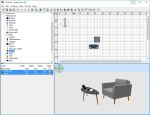- Home
- computer software
- Computer Timeline
computer timeline
The following is a brief outline of computer timeline. The list is not a complete one but we have tried to cover most of the great incidents in the development of computer technology.
The table is compiled from different sources. Please remember that mathematical calculators are the base for the development of computer technology.
Computer history full timeline
1623
A machine,
which can compute the basic mathematical equation, is invented by German
scientist Wilhelm Schikard.
1642
Frenchmathematician Blaise Pascal invented digital adding machine.
1822
British mathematician Charles Babbage introduces the Difference Engine, which is a computing machine. Later on in 1833, he designs Analytical Engine capable of being programmed to perform different tasks.
1939
Bell Labs’s George Stibitz designs the first binary digital computers. This Complex Number Calculator performs mathematical operations in binary form.
1945
Hungarian-American mathematician John von Neumann writes “First Draft of a Report on the EDVAC,” which describes the design of a general-purpose digital electronic computer.
1946
John Mauchly and J. Presper Eckert introduced ENIAC (Electronic Numerical Integrator and Computer) It is the first electronic computer put into operation.
1947
Transistor is invented by John Bardeen, Walter H. Brattain, and William B. Shockley of Bell Telephone Laboratories.
1949
British mathematical engineer Maurice Wilkes built and programmed the first stored-program computer. computer timeline continued.
1951
UNIVAC is introduced.
John Mauchly and J. Presper Eckert introduced UNIVAC, the successor to the first electronic computer, the ENIAC. UNIVAC is the first computer designed for commercial purpose. The U.S. Census Bureau the first to use UNIVAC.
1953
IBM sells its first electronic computer, the 701.
1955
IBM engineers designed first disk drive for random-access storage of data.
1956
At MIT, researchers build the first general purpose computer built with transistors.
1957
Fortran, the first high-level computer language Developed.
1960
Bell Labs designs, the first commercial modem, for converting digital computer data to analog signals.
1962
The First Computer Game is developed by programmers at MIT (Massachusetts Institute of Technology). It is called SPACEWAR.
1964
BASIC developed
BASIC (Beginners All-Purpose Symbolic Instruction Code) programming language developed by John Kemeny and Thomas Kurtz at Dartmouth. It becomes the popular programming language, which is easy to learn.
1969
ARPAnet, the first computer network, is developed by U.S. Defense Department contractors. It first introduced at Universtity of California and at SRI International and the University of Utah. ARPANET put a foundation for modern internet.
1971
Based on the proposal of Marcian Edward, an American engineer, Intel develops the first microprocessor called Intel 4004.
1970
IBM introduces the 8" Floppy Disk for computer data storage.
1975
The Software giant, Microsoftwasestablished in 1975 by William H. Gates III and Paul Allen. computer timeline continued
1975
The first computer, Altair 8800 introduced. Altair 8800 is taken as the first home computer. Microsoft founders, Bill gate and Paul Allen, developed a version of BASIC programming language for Altair 8800.
1979
William Moggridge of GRiD Systems Corporation designed the first laptop computer.
1980
Seagate Technology built the first hard disk drive for microcomputers.
1981
The first 3 1/2" floppy disk drive introduced by Sony.
1981
Both Philips and Sony create the CD-DA (compact disc digital audio) format.
1984
Macintosh is introduced
Apple introduces its version of personal computer, called Macintosh, the first mouse-driven computer with Graphic Unser Interface (GUI).
1984
CD-ROM introduced
The first CD-ROM drive is introduced by Philips.
1985
Microsoft introduced Windows 1.0, operating system software with graphical user interface (GUI).
1986
Compaq bring forth the Deskpro 386, the first computer to use Intel’s 32-bit chip.
1987
IBM introduces what is commonly called PS/2 machines, which make the 3 1/2" floppy disk drive and VGA video standard for PCs.
1990
British physicist and computer scientist Timothy Berners-Lee developed The World Wide Web using Hypertext Markup Language (HTML) at the European Organization for Nuclear Research (CERN) in Geneva, Switzerland.
1995
Microsoft releases Windows 95.
1998
Microsoft releases Windows 98.
2000
Microsoft releases Windows Me (Millennium Edition) and Windows 2000.
2000
Processors, which run at 1GHz, are introduced by both Intel and AMD.
2001
Microsoft introduces Windows XP, the first 32-bit Operating System.
2005
Microsoft introduces, Windows XP x64 Edition that supports processors with 64-bit extensions.
2006
Apple introduces its version of computer system based on PC architecture, which improved its previous non-PC-based Macs
2006
Microsoft introduces Windows Vista for commercial use.
2009
Microsoft releases Windows 7. Comparing to the previous OSs, Windows 7 is more user friendly and significantly improved.
2012
Microsoft released Windows 8
2015
The most famed Windows 10 is released. Windows 10 is a latest release of Microsoft's Windows NT operating system


